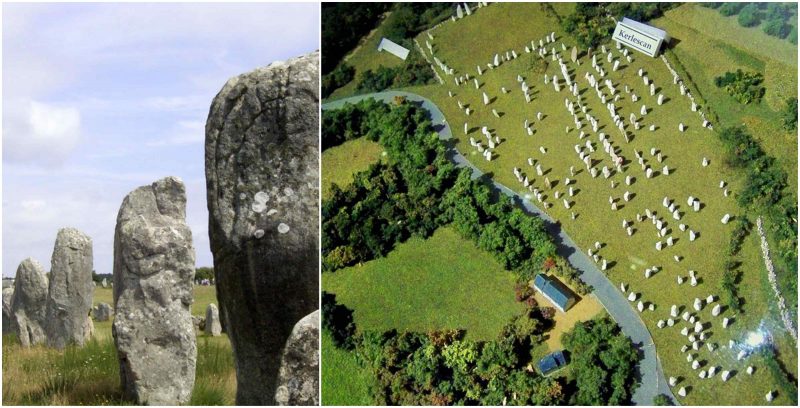There is a collection of more than 3,000 opaque stones around the village of Carnac in France, the largest of its kind ever discovered in the world.
It is assumed that some of the stones were erected in around 3300 BC by the pre-Celtic people, who continued to add more until the 4500 BC. Their reasons for doing so remain unknown.

According to a local legend, when the Romans wanted to invade the village, each soldier was turned into stone by the wizard Merlin.
And of course, there are various different beliefs and interpretations about why the stones stand there in such number and order.
There are theories that the stones are erected in ancient times in honor of deceased ancestors, and another claim states that they have an astronomical purpose.
A researcher who has studied the stones proposed a theory that the stones might be used as a form of rudimentary earthquake detector.
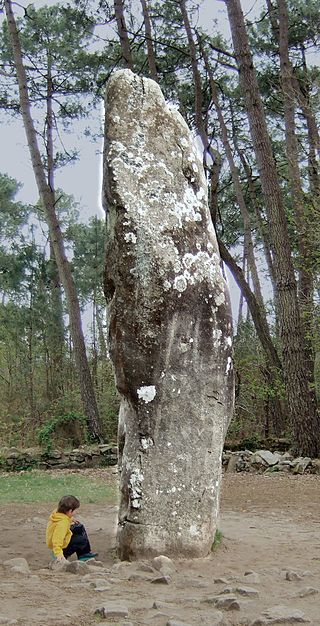
The Carnac Stones are found in clusters (dolmens), but some of them are standing alone (menhirs). The main group of stone alignments consists of 12 converging rows of standing stones expanded on a more than a kilometer.
Each standing stone of these has remains of individual stone circles. Some of the largest stones are 4 meters high and stand at the western end of the site.
Further east, the stones become smaller and smaller, reaching as low a height as 0.6 meters.

The stone rows are divided into three major groups – Ménec, Kermario, and Kerlescan – which might have belonged to a single group that was split.
The Ménec alignments represent twelve converging rows of single stones and which according to Alexander Thom, might have been part of stone circles at either end.
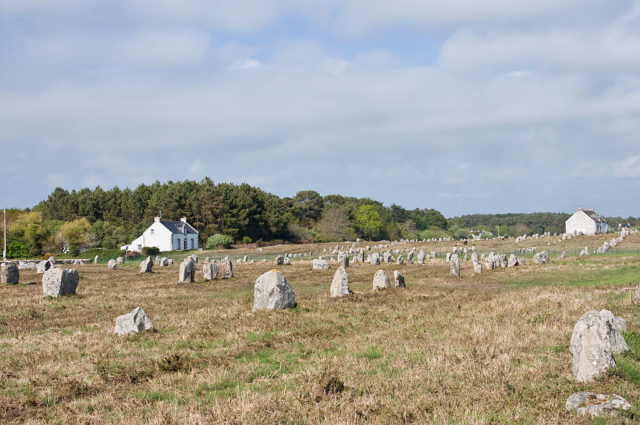

A little further along to the east, this fanning layout is virtually repeated in what is called the Kermario (House of the Dead) alignment.
There are 1029 stones in this alignment, ordered in ten columns and reaching a height of 1.3 metres.
Aerial photography of the site revealed that there is a stone circle at the east end.
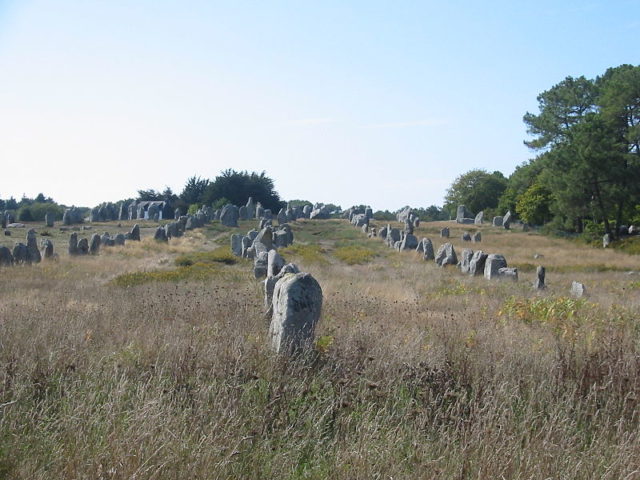

The Kerlescan group consists of 555 smaller stones on the east ends of the other two sites. The stones stand in 13 lines that are 800 metres long.
At the extreme west, where the stones are tallest, there is a stone circle which has 39 stones. There may also be another stone circle to the north.
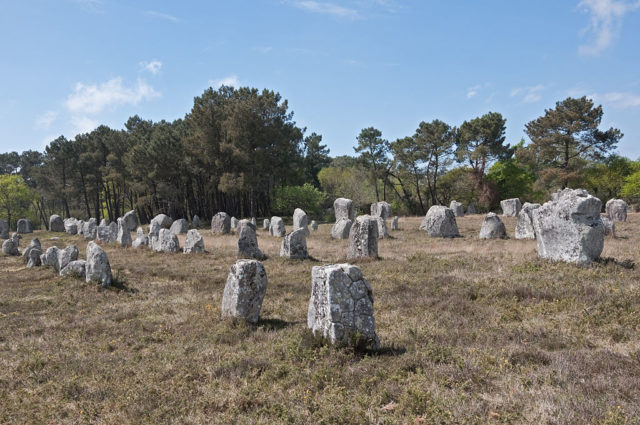
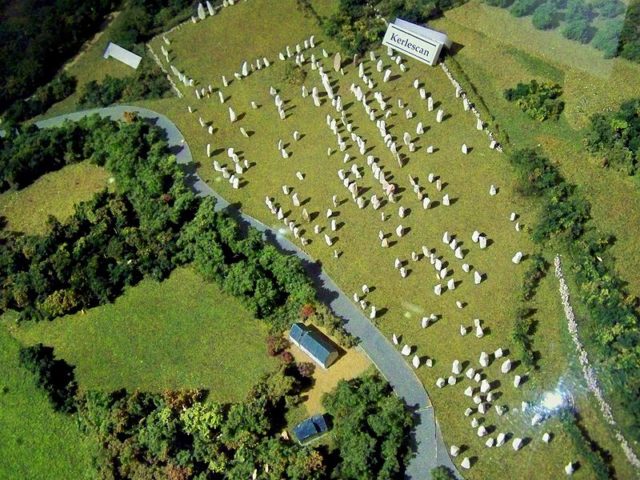
According to another local legend, when all the stones met in a circle, it would mean the end of the world.
